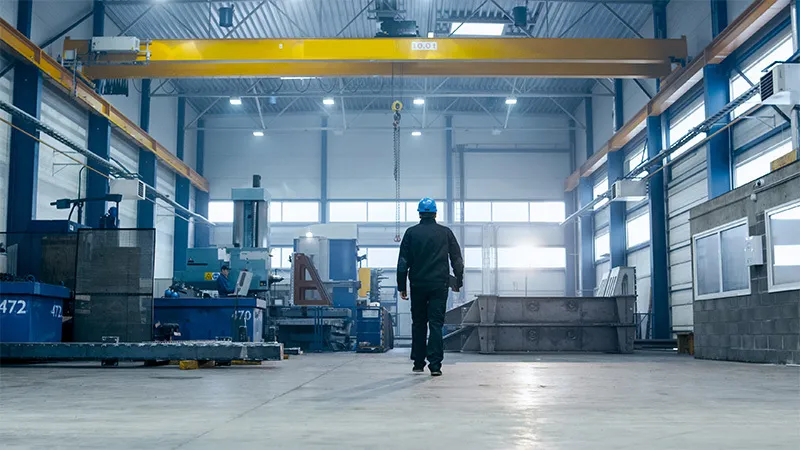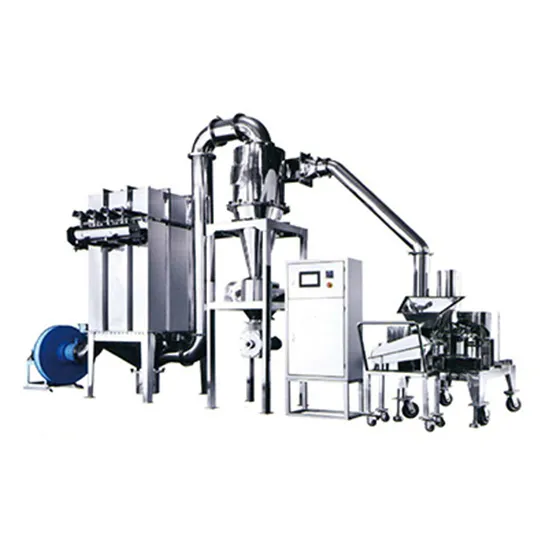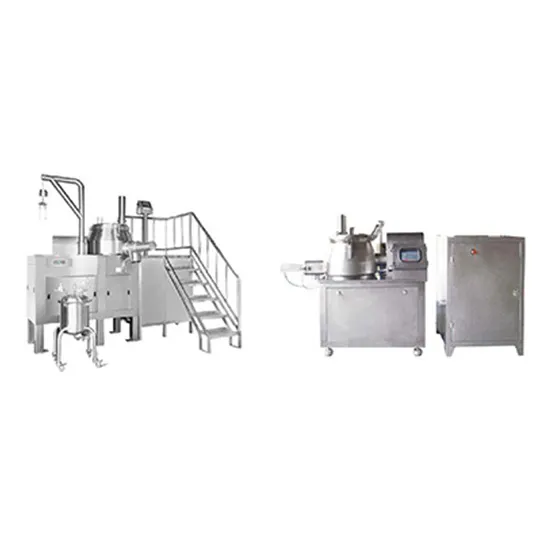NEWS
The Ultimate Guide to Rotary Cone Vacuum Dryers: Uncover the Secrets
Nov 29,2023
Table of Contents
1. Introduction: Understanding Rotary Cone Vacuum Dryers
2. Benefits of Rotary Cone Vacuum Dryers
3. Working Principle of Rotary Cone Vacuum Dryers
4. Applications of Rotary Cone Vacuum Dryers
5. Maintenance Tips for Rotary Cone Vacuum Dryers
6. Frequently Asked Questions (FAQs)
7. Conclusion
Rotary cone vacuum dryers are essential equipment in the industrial sector, specifically in drying processes. This guide provides a comprehensive understanding of these dryers, their benefits, working principle, applications, and maintenance requirements.
Rotary cone vacuum dryers offer numerous advantages for industrial applications. These benefits include:
- Efficient and uniform drying: The design of rotary cone vacuum dryers ensures an even distribution of heat, resulting in consistent drying of materials.
- Reduced drying time: The combination of vacuum and rotary movement accelerates the drying process, significantly reducing the time required for drying operations.
- Preservation of product quality: The low-temperature drying environment prevents material degradation, ensuring the quality and integrity of the end product.
- Versatility: Rotary cone vacuum dryers can handle a wide range of materials, including powders, crystals, pastes, and more. This versatility makes them suitable for various industries.
- Energy efficiency: With their efficient design, these dryers minimize energy consumption, leading to cost savings in the long run.
- Dust-free operation: The vacuum system of rotary cone vacuum dryers eliminates the release of dust and ensures a clean working environment.
The working principle of rotary cone vacuum dryers involves the combination of heat, vacuum, and rotation to evaporate moisture from materials. Here's how it works:
1. Loading: The wet material is loaded into the cone-shaped drying chamber of the dryer.
2. Rotation: The dryer's cone-shaped vessel rotates slowly, promoting the mixing and agitation of the material.
3. Heating: Steam or hot water is circulated through the jacket surrounding the cone, transferring heat to the material.
4. Vacuum: A vacuum system is applied to the interior of the cone, creating a reduced pressure environment. This lowers the boiling point of the liquid, facilitating faster drying.
5. Moisture removal: As the material rotates and the vacuum is applied, moisture evaporates from the material and is carried away by the vacuum system.
6. Discharge: Once the desired moisture level is achieved, the dried material is discharged from the dryer.
Rotary cone vacuum dryers find applications in various industries due to their versatility. Some common applications include:
- Pharmaceutical industry: Rotary cone vacuum dryers are used for drying active pharmaceutical ingredients (APIs), intermediates, and final products.
- Chemical industry: These dryers are utilized for drying chemicals, pigments, dyes, and other chemical compounds.
- Food industry: Rotary cone vacuum dryers are suitable for drying 香蕉传媒 products such as powders, granules, and flakes.
- Mineral processing: These dryers are employed in the drying of minerals, ores, and other mining products.
- Environmental industry: Rotary cone vacuum dryers assist in the drying of sludge, wastewater solids, and other environmental waste materials.
Proper maintenance is crucial for the smooth and efficient operation of rotary cone vacuum dryers. Here are some essential maintenance tips:
1. Regular cleaning: Clean the dryer's interior and exterior surfaces regularly to prevent the buildup of contaminants and ensure optimal performance.
2. Inspection of seals and gaskets: Check the seals and gaskets regularly for any signs of wear or damage. Replace them if necessary to maintain a vacuum-tight operation.
3. Lubrication: Lubricate the rotating parts of the dryer as per the manufacturer's guidelines to reduce friction and extend the equipment's lifespan.
4. Calibration: Periodically calibrate the temperature and pressure gauges to ensure accurate readings.
5. Preventive maintenance: Follow a preventive maintenance schedule, including routine inspections, cleaning, and replacement of worn-out parts, to avoid costly breakdowns and downtime.
Q1: What are the advantages of using rotary cone vacuum dryers?
A1: Rotary cone vacuum dryers offer benefits such as efficient drying, reduced drying time, preservation of product quality, versatility, energy efficiency, and dust-free operation.
Q2: Can rotary cone vacuum dryers handle sensitive materials?
A2: Yes, rotary cone vacuum dryers are suitable for drying sensitive materials as the low-temperature drying environment prevents material degradation.
Q3: How do rotary cone vacuum dryers compare to other types of dryers?
A3: Rotary cone vacuum dryers are known for their efficiency, uniform drying, and versatility compared to other types of dryers.
Q4: How often should rotary cone vacuum dryers be maintained?
A4: Regular maintenance is essential for rotary cone vacuum dryers. Follow the manufacturer's guidelines and implement preventive maintenance practices to ensure optimal performance.
Q5: Are rotary cone vacuum dryers cost-effective?
A5: Yes, rotary cone vacuum dryers are cost-effective in the long run due to their energy efficiency, reduced drying time, and preservation of product quality.
In conclusion, rotary cone vacuum dryers are essential components in the industrial sector, providing efficient and uniform drying for a wide range of materials. Understanding their benefits, working principle, applications, and maintenance requirements allows businesses to optimize their drying processes and enhance productivity. By following proper maintenance practices, rotary cone vacuum dryers can deliver reliable and cost-effective drying solutions for various industries.
1. Introduction: Understanding Rotary Cone Vacuum Dryers
2. Benefits of Rotary Cone Vacuum Dryers
3. Working Principle of Rotary Cone Vacuum Dryers
4. Applications of Rotary Cone Vacuum Dryers
5. Maintenance Tips for Rotary Cone Vacuum Dryers
6. Frequently Asked Questions (FAQs)
7. Conclusion
1. Introduction: Understanding Rotary Cone Vacuum Dryers
Rotary cone vacuum dryers are essential equipment in the industrial sector, specifically in drying processes. This guide provides a comprehensive understanding of these dryers, their benefits, working principle, applications, and maintenance requirements.
2. Benefits of Rotary Cone Vacuum Dryers
Rotary cone vacuum dryers offer numerous advantages for industrial applications. These benefits include:
- Efficient and uniform drying: The design of rotary cone vacuum dryers ensures an even distribution of heat, resulting in consistent drying of materials.
- Reduced drying time: The combination of vacuum and rotary movement accelerates the drying process, significantly reducing the time required for drying operations.
- Preservation of product quality: The low-temperature drying environment prevents material degradation, ensuring the quality and integrity of the end product.
- Versatility: Rotary cone vacuum dryers can handle a wide range of materials, including powders, crystals, pastes, and more. This versatility makes them suitable for various industries.
- Energy efficiency: With their efficient design, these dryers minimize energy consumption, leading to cost savings in the long run.
- Dust-free operation: The vacuum system of rotary cone vacuum dryers eliminates the release of dust and ensures a clean working environment.
3. Working Principle of Rotary Cone Vacuum Dryers
The working principle of rotary cone vacuum dryers involves the combination of heat, vacuum, and rotation to evaporate moisture from materials. Here's how it works:
1. Loading: The wet material is loaded into the cone-shaped drying chamber of the dryer.
2. Rotation: The dryer's cone-shaped vessel rotates slowly, promoting the mixing and agitation of the material.
3. Heating: Steam or hot water is circulated through the jacket surrounding the cone, transferring heat to the material.
4. Vacuum: A vacuum system is applied to the interior of the cone, creating a reduced pressure environment. This lowers the boiling point of the liquid, facilitating faster drying.
5. Moisture removal: As the material rotates and the vacuum is applied, moisture evaporates from the material and is carried away by the vacuum system.
6. Discharge: Once the desired moisture level is achieved, the dried material is discharged from the dryer.
4. Applications of Rotary Cone Vacuum Dryers
Rotary cone vacuum dryers find applications in various industries due to their versatility. Some common applications include:
- Pharmaceutical industry: Rotary cone vacuum dryers are used for drying active pharmaceutical ingredients (APIs), intermediates, and final products.
- Chemical industry: These dryers are utilized for drying chemicals, pigments, dyes, and other chemical compounds.
- Food industry: Rotary cone vacuum dryers are suitable for drying 香蕉传媒 products such as powders, granules, and flakes.
- Mineral processing: These dryers are employed in the drying of minerals, ores, and other mining products.
- Environmental industry: Rotary cone vacuum dryers assist in the drying of sludge, wastewater solids, and other environmental waste materials.
5. Maintenance Tips for Rotary Cone Vacuum Dryers
Proper maintenance is crucial for the smooth and efficient operation of rotary cone vacuum dryers. Here are some essential maintenance tips:
1. Regular cleaning: Clean the dryer's interior and exterior surfaces regularly to prevent the buildup of contaminants and ensure optimal performance.
2. Inspection of seals and gaskets: Check the seals and gaskets regularly for any signs of wear or damage. Replace them if necessary to maintain a vacuum-tight operation.
3. Lubrication: Lubricate the rotating parts of the dryer as per the manufacturer's guidelines to reduce friction and extend the equipment's lifespan.
4. Calibration: Periodically calibrate the temperature and pressure gauges to ensure accurate readings.
5. Preventive maintenance: Follow a preventive maintenance schedule, including routine inspections, cleaning, and replacement of worn-out parts, to avoid costly breakdowns and downtime.
6. Frequently Asked Questions (FAQs)
Q1: What are the advantages of using rotary cone vacuum dryers?
A1: Rotary cone vacuum dryers offer benefits such as efficient drying, reduced drying time, preservation of product quality, versatility, energy efficiency, and dust-free operation.
Q2: Can rotary cone vacuum dryers handle sensitive materials?
A2: Yes, rotary cone vacuum dryers are suitable for drying sensitive materials as the low-temperature drying environment prevents material degradation.
Q3: How do rotary cone vacuum dryers compare to other types of dryers?
A3: Rotary cone vacuum dryers are known for their efficiency, uniform drying, and versatility compared to other types of dryers.
Q4: How often should rotary cone vacuum dryers be maintained?
A4: Regular maintenance is essential for rotary cone vacuum dryers. Follow the manufacturer's guidelines and implement preventive maintenance practices to ensure optimal performance.
Q5: Are rotary cone vacuum dryers cost-effective?
A5: Yes, rotary cone vacuum dryers are cost-effective in the long run due to their energy efficiency, reduced drying time, and preservation of product quality.
7. Conclusion
In conclusion, rotary cone vacuum dryers are essential components in the industrial sector, providing efficient and uniform drying for a wide range of materials. Understanding their benefits, working principle, applications, and maintenance requirements allows businesses to optimize their drying processes and enhance productivity. By following proper maintenance practices, rotary cone vacuum dryers can deliver reliable and cost-effective drying solutions for various industries.
More News










